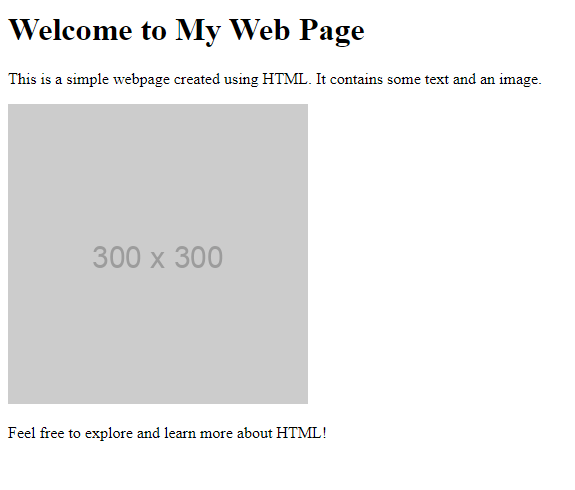History of HTMLWhat is HTML?HTML is a Hypertext markup language that is used to create and organize content on the website or, we can say, the global web. It is also used to display the structure and layout in web browsers that form the framework for web pages. HTML uses a system of markup tags to specify various elements and their relationships within a web page. In HTML, these tags come in pairs. They are enclosed in angle brackets and typically include the opening and closing tags. In HTML, we have some information such as text, images, and links, and with the help of all this information, we can make up the actual content for the website. In the early 1990s, a physicist named Tim Berners-Lee came up with an idea of how people could share and access information globally when he was working at CERN in the early 1990s. His idea was the World Wide Web, which he made possible by introducing HTML in 1991. HTML made it possible to organize documents using straightforward markup tags, allowing users to navigate between related documents easily. Evolution of HTMLThe evolution of HTML development has influenced how a developer can produce and use web content. HTML is a standard markup language that is used for creating web pages, and it is a crucial component of the World Wide Web. Here is a quick summary of the important phases in HTML's development: HTML 1.0In 1993, Tim Berners-Lee, the creator of the World Wide Web, developed HTML 1.0, the first version of HTML. The markup language was straightforward and created for basic text documents with hyperlinks. HTML 1.0 introduced the html>, head>, and body> tags in addition to the anchor tag (a) for hyperlink creation. HTML 2.0HTML 2.0 was developed in 1995. HTML 2.0 increased the functionality of web pages by supporting tables and image embedding. It also introduced the idea of user input forms. HTML 3.0HTML 3.0 was developed in 1995. HTML 3.0 was a draught specification with more sophisticated features like support for multimedia, style sheets, and enhanced tables. It was never broadly embraced, though. HTML 3.2HTML 3.2 was developed in 1997. HTML 3.2 was the first widely adopted standard and brought about significant improvements. It introduced features like improved forms, support for multiple character sets, and frames for dividing web pages. HTML 4.01In HTML 4.01, we marked a significant advancement by providing better support so developers can easily use Cascading style sheets that are used to style web pages. HTML 4.01 introduced us to the use of elements like div and span to create a more precise document structure. HTML 4.01 has various variants to meet the requirements, including HTML 4.01 transitional and HTML4.01 strict. Extensible Hypertext Markup Language (XHTML)XHTML sought to give HTML the XML structure. It required well-formed documents and adhered to stricter syntax guidelines. The main versions of XHTML were 1.0 and 1.1, but due to its rigidity, adoption of XHTML was constrained. HTML5HTML5 marked a significant turning point in HTML development. It made it simpler to develop rich web applications by introducing a wide range of new elements and APIs for multimedia, graphics, and interactivity. Canvas, video, audio, and the scalable vector graphics element (svg) were important features. With elements like "header," "nav," and "footer," HTML5 also prioritizes semantic markup, making it simpler for search engines and assistive technologies to understand web content.
HTML Living StandardHTML has changed from being released in discrete versions to being a "living standard." In other words, as new features are developed, browser vendors implement them into the specification, which is constantly changing. This strategy enables quick innovation and adjustment to shifting web requirements. As new features and enhancements are created to meet the needs of contemporary web development, such as responsive design, accessibility, the expansion of mobile devices, and web applications, HTML continues to evolve. ExampleLet's take a simple program to create a simple webpage with some text and an image: The HTML program here:
Output: 
The Future of HTMLHTML's future holds promise for exciting innovation and adaptation to the web's constantly changing environment. Here are some major developments and trends that point to HTML's future:
In conclusion, ongoing evolution and adaptation to the changing requirements of web developers and users will characterize HTML's future. In an ever-expanding digital world, HTML will continue to be the foundation of web development, enabling the creation of rich, interactive, and accessible web experiences.
Next TopicHTML Email Template
|
 For Videos Join Our Youtube Channel: Join Now
For Videos Join Our Youtube Channel: Join Now
Feedback
- Send your Feedback to [email protected]
Help Others, Please Share









